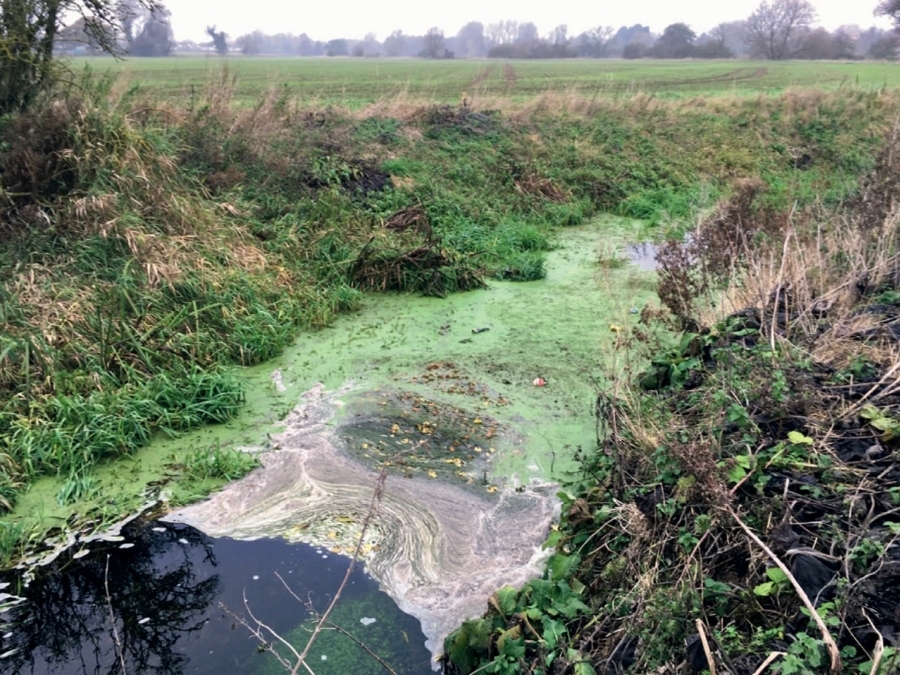This is an extract from a press release issued 10th January 2023 by one of our members, Richard Pavitt, who is also a District Councillor.
Laboratory tests of water samples from the upper reaches of the Cam not far from the river’s historic source confirm the worst fears of local environmentalists. Phosphate level is massively higher than the acceptable maximum and is stifling the river. Often agriculture is blamed but in this case it is clearly related to sewage. This points to serious neglect by Anglian Water and the Environment Agency (EA).
For the past two years District Councillor Richard Pavitt, a Great Chesterford resident, has used a handheld device to test the river, which in recent years has shown signs of considerable stress. Laboratory testing to validate his results has been provided by Cam Valley Forum, a long established river group based in Cambridge. One of their experts, Dr Mike Foley, took samples at 8 points along the river, which were sent to South East Water Scientific Services. The samples were taken in August 2022.
The Govt body, Natural England, considers 0.1mg/L to be the maximum acceptable level of Phosphate for an ecologically sensitive chalk stream such as the Cam. Measured at Sparrows End the level in the river is 55 times higher than it should be. Even in stretches of the river where phosphate concentration is lower it is still four times higher than acceptable. (* note 1)
These results confirm the major source of phosphate contamination to be water recycled by sewage treatment works (STWs) at Quendon, Newport and Great Chesterford. However, the real eye opener is the discovery that none of these locations has ever had its phosphate output controlled by the EA and that Anglian Water has not chosen to protect the river by installing equipment to reduce phosphate outflow. (* note 2)
Human effluent, detergents and other household substances contain phosphate, a nutrient that accelerates algal and fungal growth, robbing river water of oxygen. When river levels are low the impact is even greater and with continuing over-abstraction of the aquifer to meet increased demand for household water the ecology of the upper stretch of the Cam is in nutrient-induced terminal decline.
As more and more houses have been built in the villages along the Cam valley the existing STWs have been processing far greater volumes of sewage than they were designed for and recycling ever higher volumes of phosphate into the river.
When previously asked about excessive phosphate outflow from the Newport STW the EA said it was not aware of any levels being exceeded. That is unsurprising since no levels have ever been set.
*note 1: Example results
Phosphate (as soluble reactive phosphorous/SRP). Target 0.1mg/L
Quendon – outflow from STW 7.03 mg/L
Newport – outflow from STW 6.52 mg/L
Sparrows End – mid stream 5.50 mg/L
Littlebury – mid stream 0.40 mg/L
Gt. Chesterford – outflow from STW 5.09 mg/L
In summer, the river is routinely augmented from boreholes, which may explain the drop in level between Sparrows End and Littlebury as a result of dilution.
* note 2: Anglia Water
Robin Price, Anglia Water’s Director of Quality & Environment, has advised that Quendon and Newport sewage treatment works will be upgraded to reduce phosphate outflow with a scheduled completion date of December 2024 and also at Elmdon, which discharges into a tributary of the Cam. However there will remain uncapped outflows into the Cam at Audley End, Great Chesterford and Wendens Ambo.

